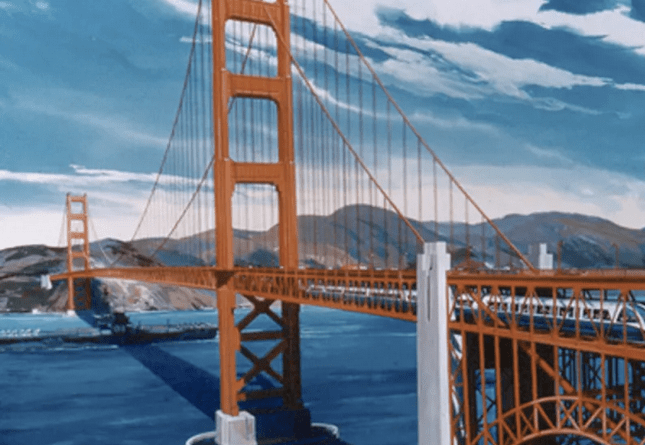Note: GJEL Accident Attorneys regularly sponsors coverage on Streetsblog San Francisco and Streetsblog California. Unless noted in the story, GJEL Accident Attorneys is not consulted for the content or editorial direction of the sponsored content.
The San Francisco Chronicle had a great story today, reviewing why BART doesn't go across the Golden Gate Bridge to Marin.
From the article:
A 1956 poll found that 87.7 percent of Marin residents wanted a BART line. Two San Francisco Bay Area Rapid Transit Commission studies, one in 1955 and a second in 1961, reached the same conclusion: The bridge was structurally capable of carrying trains on a lower deck with minor modifications. It seemed like the simple, fiscally responsible solution. BART's trains could glide on a retrofitted Golden Gate Bridge to serve a transit-deprived community that overwhelmingly wanted BART.
This sentence really stood out in light of the region's germinating $100 billion "mega measure" to expand regional transit throughout the Bay Area:
But commuters riding BART trains on the bridge would likely mean fewer people driving across the bridge, which meant fewer people paying bridge tolls. And less toll revenue was not something the Golden Gate Bridge District directors were going to accept sitting down. Behind closed doors, they plotted to quash the plan.
Unfortunately, putting the interests of millions of Bay Area commuters behind the parochial interests of bureaucrats and agencies is, all too often, still the prevailing attitude.
Caltrain and BART refuse to coordinate schedules. There are virtually no discounts between BART, Muni, and other systems. We have BART lines that could run at five or ten-minute intervals but don't because of union interests requiring that every train have an operator, even on lines where there's clearly no need for one (such as on the 1.7 mile Millbrae-to-SFO spur). We have trains and buses full of hundreds of people waiting behind individual motorists.
And we have a Metropolitan Transportation Commission, ostensibly the agency that should be leading a regional transit vision, continually punting on fare integration.
If this remains the attitude from public officials, how will advocates ever convince the majority, let alone two-thirds of the region's population, to vote "yes" on a sales tax or any other revenue generator for a $100 billion measure? For that matter, how will transit advocates even convince themselves?
Fortunately, it's not too late--if the agencies take inexpensive but concrete steps with current services to show that the rider is going to be first.
That means the Clipper Executive Board of the Metropolitan Transportation Commission approves a fare-integration study and vows to move away from revenue neutrality. That means Alameda County Transit starts to serve Treasure Island directly, instead of making current and future residents ride to San Francisco to get to Oakland. It means running five-minute BART shuttle trains between SFO and Millbrae, with no additional fare for Caltrain passengers, so there's little less encouraging of people to use Lyft and Uber to get to the airport.
And how about cutting the bars between Muni and BART?
In fact, why not do a press event to officially announce the mega measure in the Civic Center or Embarcadero stations, where the heads of SFMTA, BART, MTC, the transportation union, and mayors from throughout the region pick up an angle grinder and each cut a bar between the two systems. What better symbol to show that these agency heads are willing to get their hands dirty and physically intervene to build a regional system that puts the rider first?
And then we should find symbols such as these cage bars, dividing different transit agencies physically and in every other way that makes it harder to get from A to B throughout the region, and continue hacking away at them.
That's what it will take to convince voters that they'd be supporting a tax that would build a better system for riders, not just more trains that don't connect, take too long, cost too much to ride, and are still subordinate to motoring interests.
What would it take to get you to trust our region's planning and transit agencies to shepherd a $100 billion mega measure? Post your thoughts below.
Also, be sure to sign Seamless Bay Area's petition for fare integration.






